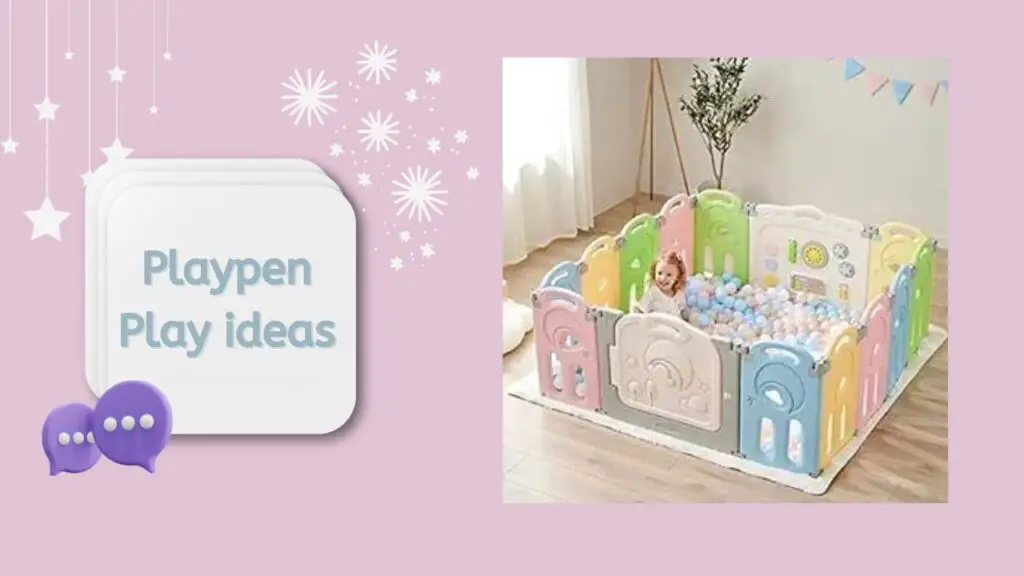Baby Playmats
Are baby playmats necessary while playing? When do babies use playmats? Are foam play mats safe for babies? All these queries came to your mind when your baby get 3 months old and started rolling on his tummy. This is the time when you want to buy a playmat to care for a baby. Babys play mat is really very necessary for them while they are in a mood to start playing on their tummies. A soft foam play mat helps the baby lie safely and comfortably. The colors and texture of the mats, the toys attached to them, and the sounds encourage them to explore their senses and boost their development.
Are Baby Playmats Necessary?
Baby Playmats are Necessary, When Your Childs Get 3 Months Old And Want His Tummy Time On The Floor To Roll, Sit & Crawl For Safety.
Disclaimer :Teddycounty participates in the Amazon Associates program. We may receive a commission if you make a purchase via our website at no additional cost to you.
What are The Benefits Of Playmats?
There are lots of benefits to playmats. Floors are filled with invisible bacteria, germs, and hazardous things. Placing mats on the floor for their play makes them feel secure while playing. It develops their gross motor skills through the movement of muscles in the neck, back, legs, and arms. They develop a visual understanding of objects by holding toys hanging on the play mats. It allows your child to understand the basics of cause and effect. They learn through their practice of repeating movements. Baby Play Mats and Baby Play gyms develop their intellectual development as well.
Let’s explore some key benefits:
1. Sensory Stimulation
Playmats are designed to engage your baby’s senses, providing a stimulating and interactive experience. With various textures, colors, and patterns, they encourage sensory exploration, aiding in the development of your child’s cognitive and motor skills.
2. Tummy Time Support
Tummy time is crucial for strengthening your baby’s neck, back, and shoulder muscles. A play mat provides a comfortable and safe surface for your little one to enjoy tummy time, promoting the development of essential motor skills.
3. Cognitive Development
Many baby play mats feature detachable toys, mirrors, and sound elements that stimulate your child’s cognitive abilities. These interactive features encourage problem-solving, hand-eye coordination, and cause-and-effect understanding, all of which contribute to cognitive development.
4. Physical Exercise
Babies naturally explore their environment through movement. A play mat provides a soft and cushioned area for your little one to crawl, roll, and wiggle, promoting gross motor skills and physical exercise.
Which is The Best PlayMat for My baby?
Looking for the Best playmat, You need to ask some questions yourself. Does my baby need tummy time? or does it start Crawling? Sitting up? Starts walking? Keep these in mind and select the place where you want to put the playmat. Make sure it is colorful and has the option of hanging many toys. Select one that is easy to clean and easy to place anywhere. Choosing a flat play mat is better for your baby’s back.
Choosing the Perfect Baby Playmat
When selecting a play mat for your baby, it’s essential to consider various factors to ensure the best fit for your child’s needs. Here are some key aspects to keep in mind:
1. Safety First
Prioritize safety by choosing a play mat that is made from non-toxic materials, free from harmful chemicals. Look for certifications such as ASTM and CPSIA to ensure the mat meets safety standards.
2. Size and Thickness
Consider the size of the play mat, ensuring it is spacious enough for your baby to move around comfortably. Opt for a mat with adequate thickness to provide cushioning and support during playtime.
3. Easy Maintenance
Babies are prone to spills and accidents, so choose a play mat that is easy to clean. Look for machine-washable mats or those with removable, washable covers for convenient maintenance.
4. Portability and Storage
If you plan to use the play mat in different locations, consider its portability. Look for mats that can be easily folded or rolled up for hassle-free transportation. Additionally, choose a mat that can be stored compactly when not in use.
Materials Used in Baby Playmats:
Baby playmats are typically made from a variety of materials, depending on the brand and type of mat. Here are some common materials used in the construction of baby play mats:
1. Foam:
Many playmats are made from foam materials, such as EVA (ethylene-vinyl acetate) foam or polyurethane foam. These materials provide cushioning and are soft for babies to play on.
2. Fabric:
Some playmats feature fabric surfaces, which can be made from cotton, polyester, or a blend of different materials. The fabric is often soft and comfortable for babies.
3. Rubber:
Certain playmats may have a rubberized backing or be entirely made of rubber. Rubber provides a non-slip surface and helps keep the mat in place during play.
4. Non-toxic materials:
Many parents prefer play mats that are made from non-toxic materials, such as those free from harmful chemicals like PVC, BPA, phthalates, and lead. These materials are considered safer for babies, as they reduce the risk of potential health issues.
It’s important to note that the specific materials used can vary between different brands and models of baby playmats. When choosing a playmat for your baby, it’s advisable to carefully read the product descriptions and labels to ensure that the materials used are safe and suitable for your child’s needs.
Average cost of a baby play mat:
The cost of a baby playmat can vary widely, depending on various factors. While some play mats can be found at lower price points, around $30, others can be more expensive, reaching up to $200 or even more. On average, you can expect to spend around $70 for a baby play mat.
The price of a play mat is influenced by factors such as the style, design, and features it offers. There are play mats available in different price ranges, so you should be able to find one that fits your budget and meets your requirements. It’s always a good idea to compare prices and features from different brands and retailers to make an informed decision about the best play mat for your baby.
Conclusion
In conclusion, baby playmats play a vital role in promoting optimal development for your little one. By providing sensory stimulation, supporting tummy time, enhancing cognitive development, and encouraging physical exercise, these mats create a nurturing and engaging environment for your baby’s growth. When choosing a play mat, prioritize safety, size, maintenance, and portability to ensure the best fit for your child’s needs. Invest in a high-quality play mat, and witness the positive impact it can have on your baby’s overall development.
Remember, as your baby’s first teacher, you play a significant role in their growth and learning journey. Embrace the joy of playtime and create wonderful memories with your little one on their baby playmat!


